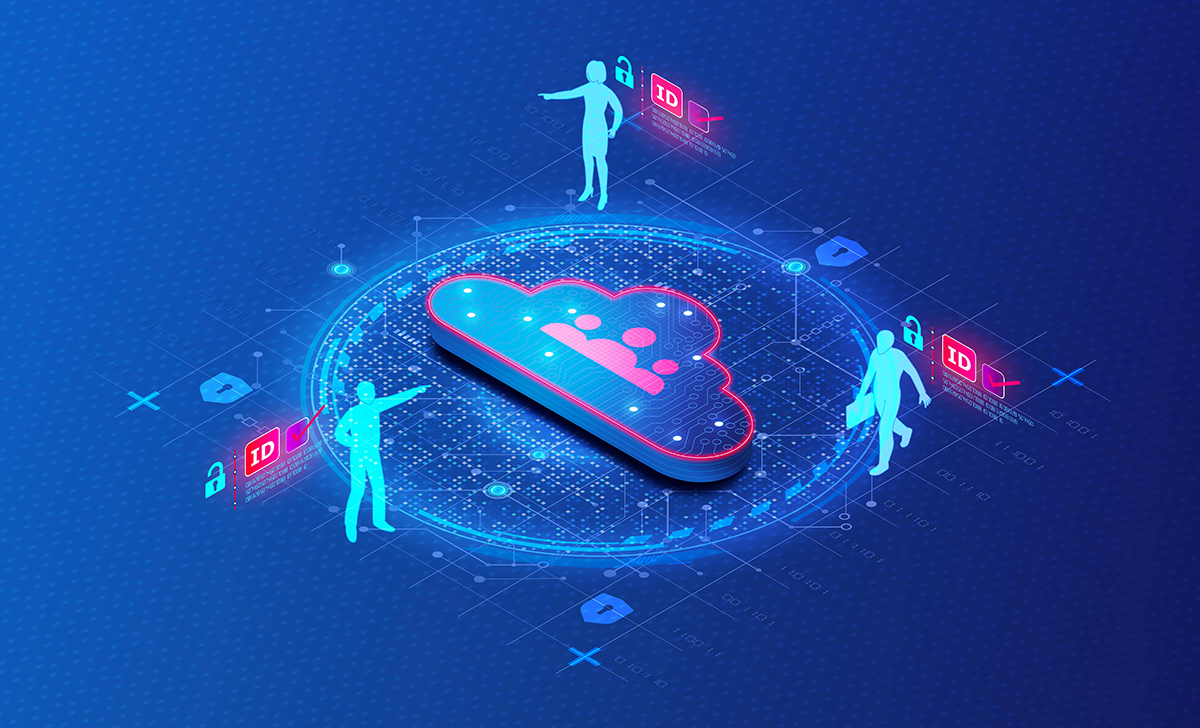
Why Workplace Culture will be Critical to the Future of Work

With vaccination numbers on the rise and the world shifting to accommodate the new normal, businesses are thinking about how to approach both the present and the future of work. And while being able to live in the now is critical, it is the latter that will be key to their ability to compete as well as attract and retain talent.
As a digital engineering business employing more than 2,000 people across three continents and 12 locations, the last 18 months has tested us like never before.
At Apexon, we’re proud of our diverse, global blend of talent, technical expertise and the entrepreneurial spirit that drives us. When the pandemic hit, we knew immediately it was of paramount importance to maintain our innovation culture, our commitment to continuous learning, inclusivity and diversity – all the facets of our work culture that have earned us peer recognition in the past.
Looking to the future, for many decision makers, the question that is most on their minds is will the post-pandemic workplace be on-site, at home or a hybrid of both. More importantly, perhaps, they also need to consider what the workforce wants.
Productivity in a Pandemic
When the global health crisis forced organizations to pivot towards entirely distributed, remote working, it tested their business agility as never before.
Some of the changes triggered by COVID-19 look unstoppable: digital transformation being one and increased acceptance of remote working being another. Many businesses noted – perhaps with surprise – that productivity levels stayed high and employee satisfaction rose.
For many employees, the initial shift to enforced remote working must have appeared a dream come true.
Finally, no commute and a way to balance the twin demands of family life and work. In offices where the concept of presentee-ism ruled, enforced remote working enabled workers to be measured on their actual output rather than hours at the office. In fact, a recent study by the Harvard Business Review declared “knowledge workers are more productive from home” after the first phase of lockdowns in 2020.
However, there are also signs that the business world is shifting back to the office. For the most part it is the major tech companies who have been leading the calls for workplace “normalcy” … which is slightly ironic as they were the ones who pivoted first to a remote working model.
A recent peer-reviewed study by Microsoft of 61,182 of its US-based workers casts serious doubts on the benefits of remote working. The research shows that while bonds within teams were likely to have increased, productivity and collaboration between different teams decreased. Furthermore, remote working resulted in longer hours with more emails and instant messages exchanged. Interestingly, this type of “asynchronous” communication didn’t help workers understand complex information more quickly or convey information better.
Building Business Success in a Crisis
For a digital engineering company like ours where digital really is part of our DNA, the jump to remote working likely felt easier for our people than many other institutions.
Apexon’s rapid response to the crisis saw 95 percent of our people working remotely within 48 hours, with staff reporting increased productivity and higher employee satisfaction. We leveraged our deep digital engineering experience together with strong industry partnerships to meet the sudden, acute demand for digital transformation services, triggered by the pandemic. Between March and July 2020, for example, we bucked the negative business environment and forged partnerships with several new clients, expanding significant areas of our business, such as our digital health practice.
As a company, we faced the same pressure as our clients to accelerate our own digital journey. The pandemic forced us to completely digitize our operations and we moved all development and customer data to the cloud with accelerators to accommodate increased online workload.
Some companies – especially those that were already at an elevated level of digital maturity – thrived in the initial crisis period, but all companies now want to provide clarity for the future. Now that they have had to time to analyze the impacts of remote working, it is time to set out longer-term policies for the workplace.
What Employees Want
While numerous polls claim to reveal what employees would like to see from their workplace in the future, the reality is a little more complex.
There’s mounting evidence that working from home is losing some of its appeal even with employees who enthusiastically embraced it. DIY home offices often lack equipment and ergonomics, leading to frustration and physical ailments. Equally important, one person’s peace and quiet is another person’s loneliness and isolation. We are social creatures and offices provide an environment for engagement, interaction … and fun.
Furthermore, there’s broad agreement that more flexible remote working policies are the way forward but achieving a balance that’s right means different things to different people, depending on their job function, age and demographic.
By way of illustration, a recent industry study showed just how diverse people’s work preferences were. Three quarters of Gen Z-ers wanted more face-to-face collaboration opportunities, employees in rural locations tended to prefer remote working, newer employees valued onsite working more than people who had been with the company longer and women were more likely to appreciate remote working.
It’s also worth thinking about what people categorially don’t want.
Among the downsides of having a distributed, remote workforce are the ongoing concerns around career advancement, recognition and training. For example, if proximity bias – that is, preferential treatment for workers that are physically close to managers – is perceived to exist in a workplace, then workers may decide that working in the office is a better option to being “out of sight, out of mind.”
Work Culture in a Hybrid Workplace
While a true hybrid model of working clearly requires equal opportunities for advancement whether employees work from the office or home, to be successful, companies also need to focus on creating a thriving workplace culture. Employees need to feel engaged, collaborate and innovate together, even if they’re physically dispersed.
At Apexon, we’re lucky to have the privilege of working with highly innovative, independent minds. It will come as no surprise that we’re a tech savvy workforce. In digital engineering there are many reasons for dispersed teams, so we already had deep experience working in distributed teams even before the pandemic.
However, we also try hard to not rest on our laurels. The company’s aim has always been to foster a dynamic work environment for all, whether that meant in the workplace or remotely. Apexon is fortunate to work with innovative technologies for enviable clients, meaning we are already experienced at attracting talent pool that’s truly global.
That said, we also don’t take our appeal for granted, so we give careful consideration to how remain competitive at retaining people. Here are three foundational concepts driving our HR and talent acquisition strategy.
- Never stop learning
Times change and with them, how we support on-the-job training and apprenticeships as well as development throughout a career at Apexon.
To emphasize the importance of continuous learning, we’ve designed on-demand programs to help our people take charge of where they want their careers to go. For instance, Apexon University offers courses in Frontend Engineering, Backend Engineering, DevOps, Data Engineering, and QE (Quality Engineering), in addition to multiple partner certifications – AWS, GCP (Google Cloud Platform), Microsoft Azure, and more.
- Create a culture, not just a work environment
We’ve had plenty of Apexon Associates come back to us from our competitors and more often than not they cite “workplace culture” as playing a pivotal part in their return. With an increasingly dispersed workforce, businesses can no longer rely on office-based engagement as a way of building morale, collaboration and teamwork (although we’re looking forward to the resumption of our old get-togethers too).
Instead, pioneering employers need to focus on creatively harnessing the many remote tools available to create a fun environment and foster a sense of belonging. For instance, in 2020, we launched our first global virtual “Hackathon,” an annual meeting of minds where digital solutions to pressing issues were shared and discussed.
- People, not processes should drive the business
Digital transformation has undoubtably accelerated in the last 18 months, mainly because the pandemic highlighted many inefficiencies with outdated business systems. Too often, businesses put up with systems, making their people adapt to the processes, instead of the other way around.
Access to real-time decision-making information is a case in point. Known to be a key driver of business agility, having business insights at your fingertips is still sadly a dream for many business leaders. Managers might be able to work around this by scheduling update meetings or using their experience and gut instinct, but isn’t it time businesses prioritized empowering more of their staff with data-driven decision-making?
The Future of Work is Already Here
There is absolutely no doubt that the black swan event of 2020 changed the world in ways that we could never imagined. Granted, the connected society had already started us down a path where digital was going to play a major role in our work/life balance, but the pandemic raised the bar almost overnight.
Remote working was often considered to be a luxury for those lucky enough to have the option, but the digital nomads that used to hang out in coffee shops for hours at a time have seen their ranks swelled by the workers that were forced to adapt. The new normal is, at the time of writing, the norm for millions of people, but companies need to make sure that the future of work considers not only what their people can achieve in a pandemic-proof workspace but also how they continue to grow personally and professionally.
The success of any business relies not only its optimization strategies but how you maximize the talent – both existing and potential – to both deliver the outcomes you need and create a workplace culture that is equitable to all. For those reasons alone, remote and hybrid work is likely to be a part of business optimization strategies for quite some time, what matters now is how you make this part of your ongoing working and recruitment practices.
Digital transformation in the workforce has always been a matter of when, not if, and COVID-19 forced companies to think hard about the future of work. Employees are the bedrock of an organization’s success, and even the brave new post-pandemic world will not take that away.
Are you a talented individual looking to join an innovative company? Does the thought of solving the toughest digital challenges appeal to you? Do want to be part of global family that does digital right? If the answer to all these questions is yes, then check out our careers page and Apply Today!




